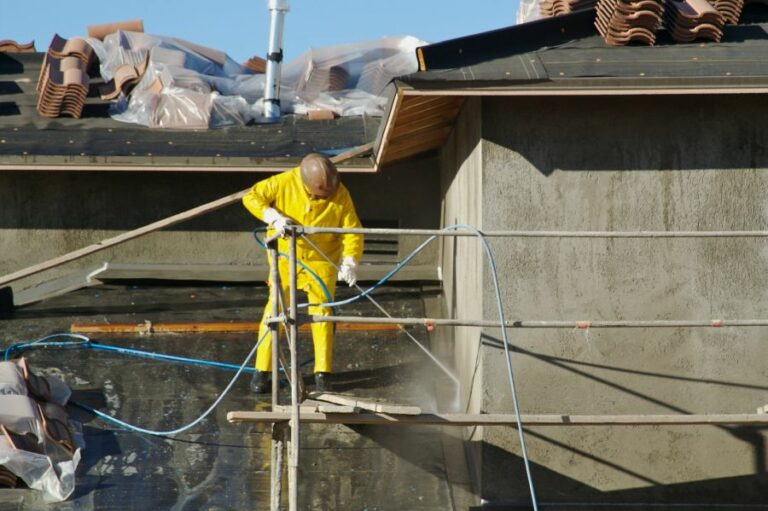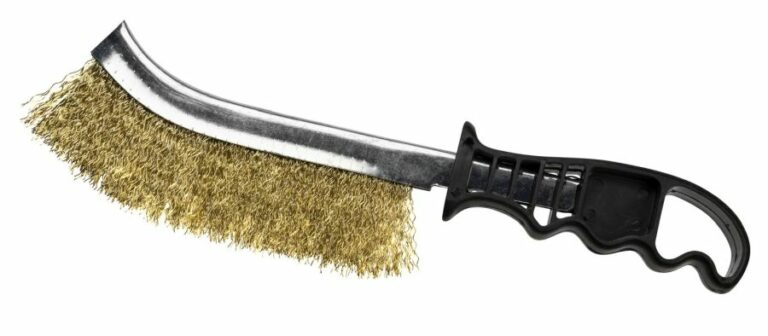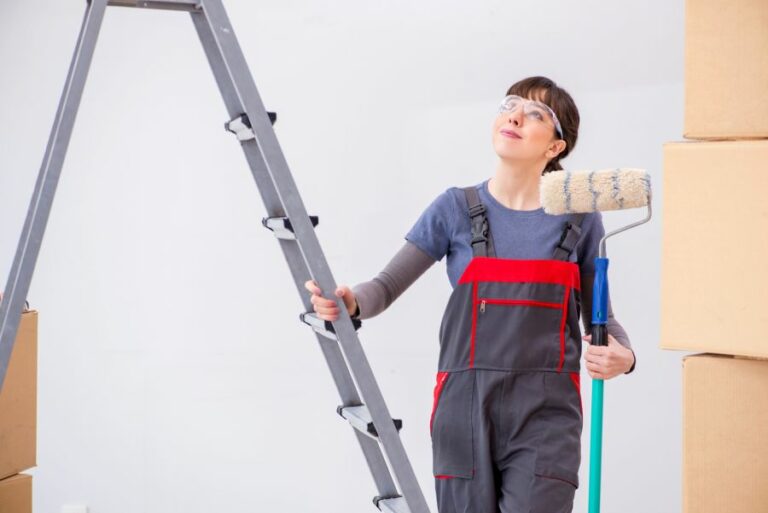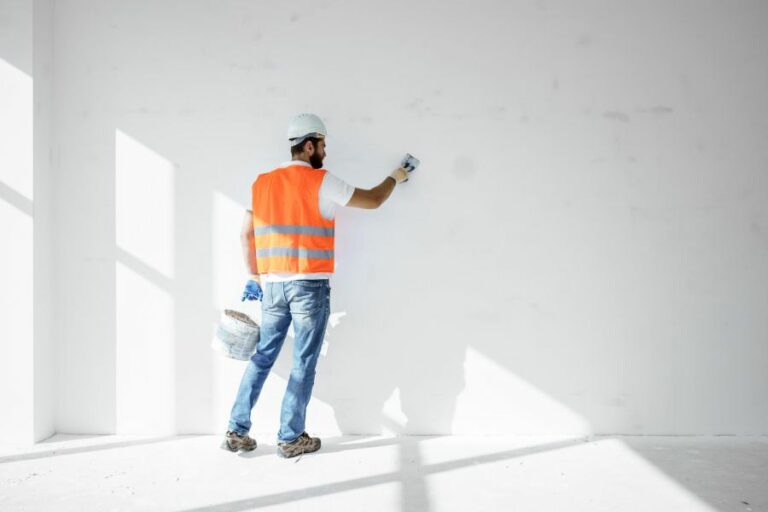Choosing The Right Abrasive In Surface Prep. What Pros Say
When it comes to ensuring a long-lasting and high-quality finish in various industries, selecting the right abrasive for surface preparation is crucial. Don’t worry. With a comprehensive understanding of the variety of abrasives available and their specific benefits, you can make an informed decision with confidence.
Choosing the right abrasive in surface prep:
Choosing the right abrasive for surface preparation is crucial for optimal adhesion, longevity of coatings, and cost-efficiency. Factors to consider include the type of surface, desired finish, hardness, particle size and shape, friability, and worker safety. Common abrasives include aluminum oxide, silicon carbide, garnet, glass beads, and steel shot and grit.

Discover invaluable insights on selecting the perfect abrasive for surface preparation tasks! Enhance your knowledge of various types of abrasives, their specific advantages, and suitable applications in our detailed guide.
Read on to become a surface prep pro and achieve the best results every time!
Contents
- 1 Selecting the Ideal Abrasive for Surface Preparation
- 2 A Guide to Picking the Right Abrasives
- 3 Top Abrasive Choices for Effective Blasting
- 4 Determining the Perfect Grit for Sandblasting
- 5 Understanding SA 2.5 Standards in Surface Prep
Selecting the Ideal Abrasive for Surface Preparation
Surface preparation plays a critical role in the success and longevity of coatings and materials applied on various substrates.
The proper selection and use of abrasives are crucial components in achieving the desired finish quality while ensuring cost-efficiency, worker safety, and environmental compliance.
• The Importance of Surface Preparation
An effectively prepared surface is critical for the successful adhesion of coatings and other applied materials. Poor surface preparation can leave behind contaminants or create an uneven profile, leading to a compromised bond or premature coating failure.
As such, it is essential to choose the appropriate abrasive for each surface preparation job to optimize performance, minimize waste, and prevent costly rework.
• Types of Abrasives
Abrasives are categorized into two main types: Non-Grit and Grit. Non-grit abrasives are softer, smoother materials such as steel wool, sandpaper, or sponge pads; they are typically used for tasks that require less aggressive surface treatments, polishing, and finishing.
Grit abrasives, on the other hand, are harder, angular materials like aluminum oxide, silicon carbide, or garnet; they are employed in applications that require more aggressive surface roughening, cleaning, and stripping.
When selecting the right abrasive for your project, consider the following factors:
– Hardness
An abrasive’s hardness affects its cutting force and potential to create a certain surface profile. It is essential to match the abrasive’s hardness to the substrate’s hardness.
A harder abrasive material is more effective in removing harder surfaces or coatings and creating a rougher profile, while a softer abrasive should be used for softer surfaces.
– Particle Size & Shape
The size and shape of an abrasive particle influence how deeply it penetrates the surface and creates a texture or profile. Angular or sharp-edged particles yield a more aggressive action and deeper profile compared to rounded or smooth particles.
The particle size of the abrasive must also be matched to the coating system that will be applied to the prepared surface, as larger particles create deeper profiles that may not be suited for thinner coatings.
– Friability
Friability refers to an abrasive’s propensity to break down or fracture during usage. Highly friable abrasives maintain a sharp cutting edge as they break down, while less friable abrasives may become rounded, diminishing their effectiveness over time.
Selecting an abrasive with the appropriate friability can help ensure consistent surface preparation results while minimizing waste and ensuring cost efficiency.
• Common Abrasives and Their Applications
Here are some popular abrasive options and their general applications:
– Aluminum Oxide
Aluminum oxide is a durable, versatile, and uniform abrasive appropriate for use on various substances, including metals, wood, plastics, and ceramics. With a high cutting rate, it is an excellent choice for removing paint, rust, or other coatings.
– Silicon Carbide
Silicon carbide is a hard, sharp-edged, and friable abrasive ideal for aggressive surface treatments such as rust or paint removal. It is particularly well suited for use on hard or brittle substrates, like glass, stone, or certain metals.
– Garnet
Garnet is a natural mineral abrasive that offers a balance between hardness and friability, making it an excellent choice for many types of surface preparation tasks. It works well on various materials, including metal, wood, plastic, or glass, and is particularly suited for waterjet cutting applications.
– Glass Beads
Glass beads are a more delicate abrasive choice and are commonly employed for cleaning and deburring surfaces without causing significant material removal or surface profile changes. They are ideal for use on metals, plastics, and glass and help achieve a satin, matte, or polished finish.
– Steel Shot & Grit
Steel shot and grit are hard, durable, and low-friability abrasives frequently used in heavy-duty applications, such as removing scale, rust, or old coatings from metal substrates or creating deep surface profiles when preparing for thick coatings.
They are also suitable for use in shot peening processes to strengthen metals.
• Additional Factors to Consider
When selecting the right abrasive, also consider factors like environmental impact, worker safety, and waste disposal requirements. For instance, choosing an abrasive with a lower dust generation rate can reduce worker exposure to hazardous dust and improve overall safety.
Additionally, avoid using abrasives that contain harmful substances like crystalline silica or heavy metals, as they can pose health and environmental risks.
• Conclusion
Choosing the right abrasive for surface preparation is essential for achieving the desired finish, optimal adhesion of coatings, and ensuring cost-efficiency.
By considering factors such as the type of surface, the desired profile, industry standards, and worker safety, you can make an informed choice that meets your project’s specific needs.
A Guide to Picking the Right Abrasives
Selecting the appropriate abrasives for a particular project is crucial to achieving the desired results. Abrasives are used to shape, finish, or polish materials such as metal, wood, glass, and ceramics.
• Understanding Abrasive Types
There are four primary types of abrasives: bonded abrasives, coated abrasives, loose abrasives, and superabrasives. Each type has specific applications and advantages, as well as different characteristics to consider when selecting the right one.
– Bonded Abrasives
Bonded abrasives consist of abrasive grains that are attached to a bonding agent, typically resin or ceramic. They are commonly found in grinding wheels, discs, and mounted points. Bonded abrasives are often used for heavy material removal tasks, such as grinding, cutting, and honing.
– Coated Abrasives
Coated abrasives consist of abrasive grains adhered to a flexible backing material, such as paper or cloth. Examples of coated abrasives include sandpaper, belts, and abrasive discs. These abrasives are commonly used for light material removal and finishing tasks, such as sanding, polishing, and buffing.
– Loose Abrasives
Loose abrasives are abrasive grains that are not bonded or coated and instead applied to a surface either dry or mixed with a liquid, such as oil or water.
Examples include polishing compounds, lapping pastes, and grit blasting media. Loose abrasives are used for precision grinding, polishing, and surface finishing applications.
– Superabrasives
Superabrasives are synthetic abrasive materials that offer superior hardness and durability compared to traditional abrasives, like aluminum oxide or silicon carbide. Examples include diamond and cubic boron nitride (CBN).
Superabrasives are primarily used for precision grinding, cutting, and polishing applications, especially with hard materials like carbide, ceramics, or hardened steel.
• Selecting the Right Grit Size
Grit size refers to the size of the abrasive particles, and it is an essential factor to consider when selecting an abrasive. The grit size is typically denoted by a number, with larger numbers representing finer particles and smaller numbers representing coarser particles.
Choosing the correct grit size is critical for achieving the desired surface finish and material removal rate. Smaller grit sizes result in smoother finishes but take longer to remove material, while larger grit sizes reduce material faster but may leave a coarser finish.
Generally, start with a coarser grit size to remove material quickly and then progress to finer grits to achieve the desired surface finish. Consider the application to determine the optimal grit size required.
• Consider the Material Being Worked On
Different abrasive materials are better suited for specific applications, mainly depending on the material being worked on. Consider the hardness, toughness, and thermal sensitivity of the material being processed when selecting the abrasive material.
Common abrasive materials include:
- Aluminum oxide: a versatile abrasive for general-purpose grinding and finishing tasks, suitable for various materials like steel, wood, and plastic.
- Silicon carbide: a harder and sharper abrasive than aluminum oxide, ideal for materials like glass, ceramics, and non-ferrous metals.
- Zirconia alumina: a durable, self-sharpening abrasive suitable for aggressive material removal tasks, commonly used with metal, wood, and fiberglass.
- Ceramic: a highly durable abrasive with a sharp cutting edge, ideal for heavy-duty material removal tasks with metal and hard-to-grind materials.
- Diamond and CBN: superabrasives that maintain their cutting edge under extreme conditions, suitable for hard materials like carbide, ceramics, and hardened steel.
• Matching the Abrasive to the Application
Finally, consider the specific application and desired outcome when selecting the right abrasive. Some factors to consider include:
- Type of operation: Are you cutting, grinding, finishing, or polishing?
- Material removal rate: How quickly do you need to remove material?
- Surface finish: What level of smoothness is required?
- Tool life: How long will the abrasive need to last before needing replacement?
• Conclusion
Choosing the right abrasive is vital for achieving optimal results while minimizing material waste and tool wear. Review your options and consider factors such as abrasive type, grit size, material being processed, and the specific application.
Top Abrasive Choices for Effective Blasting
Choosing the right abrasive material for blasting depends on several factors, such as the desired surface finish, substrate material, cost, and type of application. Professionals often consider a range of abrasive materials before deciding which one best suits their needs.
• Understanding the Basics of Abrasive Blasting
Abrasive blasting is a process in which a high-pressure jet of abrasive particles is used to remove contaminants, roughen or smooth a surface, or shape a material. The choice of abrasive material plays an essential role in achieving the desired outcome.
There are numerous abrasive materials available in the market. These can be broadly categorized into the following types:
- Minerals
- Metallic abrasives
- Synthetic abrasives
- Agricultural abrasives
A detailed discussion of each of these categories can help in selecting the best abrasive for blasting.
– Minerals
Mineral abrasives are widely used because they are readily available, cost-effective, and exhibit excellent cleaning capabilities.
Garnet
Garnet is a naturally occurring abrasive that is popular for its hardness and unique characteristics. Its natural chemical and fracture-resistant properties make it an excellent choice for applications such as water jet cutting, surface preparation, and sandblasting.
Aluminum Oxide
Aluminum oxide is a highly durable, sharp-edged abrasive material derived from various aluminum ores. It is suitable for aggressive cleaning and surface preparation tasks, including rust removal, paint stripping, and deburring. Its reusability further adds to its appeal in industrial applications.
Silica Sand
Silica sand has long been a popular choice for abrasive blasting due to its cost-effectiveness and availability. However, the use of silica sand has declined in recent years due to concerns about its potential health hazards, such as silicosis 1, and strict regulations surrounding its use.
– Metallic Abrasives
Metallic abrasives are often used in heavy-duty applications that require aggressive cleaning, high-speed cleaning, or surface roughening.
Steel Shot
Steel shot is a spherical metallic abrasive that is ideal for blasting applications requiring a smooth, polished finish. It is used primarily for removing rust, mill scale, and old coatings from metallic surfaces, and since it’s reusable, it reduces overall costs.
Steel Grit
Steel grit is an angular, aggressive abrasive that provides a deep etch, making it suitable for surface preparation before painting, coating, or other applications that require high adhesion. Steel grit is also more environmentally friendly than traditional mineral abrasives.
– Synthetic Abrasives
Synthetic abrasives are manufactured from carefully controlled chemical processes, ensuring that the abrasives have precise characteristics required for specific purposes.
Silicon Carbide
Silicon carbide is an incredibly hard, sharp, and aggressive abrasive. It is commonly used for grinding, cutting, and polishing applications, as well as in blasting operations where a highly aggressive action is needed.
Plastic Abrasives
Plastic abrasives are lightweight, durable, and versatile synthetic materials used in specialized applications such as aerospace, automotive, and electronics industries.
These abrasives are used to remove paint, coatings, and other contaminants without damaging the underlying substrate or creating a deep profile.
– Agricultural Abrasives
Agricultural abrasives are derived from plant-based products and offer an eco-friendly alternative to traditional abrasive materials.
Corn Cob
Corn cob granules are highly absorbent and gentle, making them ideal for cleaning delicate surfaces like wood, fiberglass, or soft metals. They can also be used to clean and polish without causing damage to the surface.
Walnut Shells
Walnut shells are biodegradable, non-toxic abrasive that provides a medium to fine finish on surfaces. They are ideal for removing paint, coatings, and grease from delicate substrates without causing damage.
• How to Choose the Best Abrasive for Blasting
Selecting the best abrasive material for blasting involves considering several factors:
- Surface preparation requirements: The specific requirements of the surface preparation will determine the type and grit size of the abrasive needed. Aggressive cleaning calls for harder and sharper abrasives, while less aggressive blasting requires more gentle materials.
- Substrate material: The material to be blasted plays a crucial role in selecting the appropriate abrasive. Some substrates may require an abrasive that is gentle, while others can withstand more aggressive abrasives.
- Budget constraints: Cost is a vital consideration when selecting an abrasive material. Some abrasives are more cost-effective than others, and one must weigh the upfront cost against potential savings due to reduced process time or increased reuse.
- Environmental considerations: Using an environmentally friendly abrasive is essential for some industries or applications, which dictates the choice of abrasive material.
In conclusion, there is no single “best abrasive” for all blasting applications. Selecting the right abrasive material depends on factors such as surface preparation requirements, substrate material, cost, and environmental considerations.
By carefully evaluating these factors and understanding the properties of different abrasives, professionals can choose the most suitable abrasive material for their specific application.
Abrasive | Advantages | Disadvantages |
|---|---|---|
Garnet | High speed, low consumption, recyclable | Higher cost |
Steel Shot/Grit | Aggressive cleaning, recyclable | Not suitable for all surfaces, risk of rust |
Glass Beads | Gentle cleaning, smooth surface finish, recyclable | Lower speed, not suitable for heavy rust/contamination removal |
Aluminum Oxide | Fast cleaning, sharp for etching | One-time use, higher cost |
Silicon Carbide | Extremely aggressive, fast cutting | Expensive, not suitable for all surfaces |
Corn Cob | Environmentally friendly, biodegradable | Not suitable for heavy rust/contamination removal |
Walnut Shells | Environmentally friendly, biodegradable | Not suitable for heavy rust/contamination removal |
Determining the Perfect Grit for Sandblasting
Choosing the correct grit for sandblasting is essential for achieving the desired results and preventing unnecessary damage to the surface being cleaned.
• Understanding Sandblasting Grit Types and Sizes
Sandblasting grit, also known as abrasive media, comes in various types and sizes. The most common types of abrasive media include:
- Crushed Glass
- Glass Beads
- Aluminum Oxide
- Silicon Carbide
- Steel Shot
- Steel Grit
- Garnet
- Plastic Abrasives
- Organic Abrasives (e.g., walnut shells, corn cob)
Each abrasive has distinct characteristics, making it suitable for specific applications.
For example, walnut shells and corn cob are organic abrasives ideal for removing paint from delicate surfaces, while steel shot and steel grit are heavy-duty abrasives for removing rust and preparing metal surfaces for painting.
The size of the grit is another critical consideration, as it directly impacts the aggressiveness of the sandblasting process.
Grit size is measured in grit numbers, which represent the number of holes the grit can pass through per linear inch of a sieve. Larger grit numbers indicate smaller grit particles, resulting in a finer surface finish.
For additional information on abrasive types and sizes, the Unified Abrasive Manufacturers’ Association provides a wealth of resources to help you make an informed decision.
• Assessing the Surface to be Sandblasted
To select the appropriate sandblasting grit, it is essential to identify the characteristics of the surface you plan to clean or prepare:
- Material: Identify the material type (e.g., metal, wood, plastic, concrete), as certain materials may only be compatible with specific abrasive media.
- Surface Condition: Assess the level of contamination, rust, or paint present on the surface, as this will influence the grit size required to achieve the desired finish.
- Desired Surface Finish: Determine the level of smoothness or roughness desired after sandblasting, which will guide you toward selecting the appropriate grit size.
• Balancing Aggressiveness and Surface Protection
The primary goal of choosing the right sandblasting grit is to strike a balance between aggressiveness and surface protection.
Aggressive abrasives will remove contaminants and prepare the surface quickly but pose a higher risk of damaging the material. Gentler abrasives reduce the risk of damage but may take longer to achieve the desired finish.
In general, it is best to start with a gentler abrasive media and gradually increase aggressiveness if necessary. This approach helps minimize the risk of damage while ensuring that you achieve the desired results efficiently.
• Using a Test Patch
Before commencing the sandblasting process, I recommend conducting a test patch. This crucial step can give you an idea of the effectiveness of your chosen abrasive media and grit size.
Select a small, inconspicuous area on the material and sandblast using your chosen abrasive and grit size. If the results are satisfactory, you can proceed with the main project. If not, adjust the grit size or abrasive type and retest until you achieve the desired outcome.
• Adhering to Safety Standards
Regardless of which sandblasting grit you select, it is essential to adhere to safety standards and guidelines when performing sandblasting tasks. Always wear appropriate personal protective equipment (PPE), including safety goggles, gloves, and a respirator mask.
Additionally, ensure that the sandblasting equipment is in good working condition and is correctly maintained to prevent accidents.
By taking the time to assess the surface characteristics, choose the right abrasive media and grit size, and adhere to safety guidelines, you can successfully achieve the desired outcome while minimizing the risk of damage to the material.
Remember, it is always wise to start with a gentler approach and adjust as needed, ensuring the best results for your sandblasting project.
Understanding SA 2.5 Standards in Surface Prep
In the industrial world, ensuring that a surface is cleaned, and prepared correctly is essential for the longevity and success of a coating or bonding process. Among the various surface preparation methods, SA 2.5 is a vital standard which is recognized globally.
• A Brief Introduction to SA 2.5
SA 2.5, also known as “very thorough blast-cleaning” or “near-white metal blast cleaning,” is a surface preparation standard stipulated by the International Organization for Standardization (ISO) under ISO 8501-1:2007.
Simply stated, SA 2.5 signifies a particular degree of cleanliness and surface roughness that must be achieved before applying a coating or adhesive to a metallic surface.
It is commonly used in industries such as shipbuilding, aerospace, and automotive, where high durability and adherence to coatings are of paramount importance.
• Importance of Surface Preparation in Different Industries
Before delving into the specifics of SA 2.5, it is essential to understand why surface preparation plays a vital role in various industries. In most cases, thorough surface preparation ensures:
- Improved bonding: Proper surface cleanliness ensures better adherence to the coating, decreasing the chance of premature coating failure.
- Enhanced durability: Decontamination and roughening of the surface aid in protecting the underlying metal from corrosive effects.
- Better performance: Appropriate surface preparation helps in achieving the desired functional characteristics of the coating, such as electrical or thermal conductivity, hardness, and chemical resistance.
• Understanding SA 2.5 Surface Preparation Process
– Abrasive Blasting Technique
The principal method used in achieving SA 2.5 surface preparation is abrasive blasting, which involves the use of high-pressure compressed air to project abrasive particles (e.g., steel grit, steel shot, garnet, or aluminum oxide) onto a metal surface.
This process vigorously removes surface contaminants such as rust, scale, and old coatings, while simultaneously generating a roughened profile that is conducive to better coating adhesion.
– Visual Inspection and Verification
Ensuring that the SA 2.5 standard is met for a given surface largely relies on visual inspection. An ISO-approved pictorial guide known as “ISO 8501-1” can be used to compare the surface cleanliness with standardized photographs, ranging from SA 1 (least clean) to SA 3 (most clean).
It is important to note that near-white metal blast cleaning (SA 2.5) should reveal no more than 5% of residual staining or discoloration after blasting.
– Surface Profile Measurement
Apart from ensuring adequate cleanliness, achieving the right surface roughness is an essential aspect of SA 2.5. Surface profile, often expressed in microns, can be determined using various methods, such as replica tape or needle gauge measurement.
Ideally, the selected method should be non-destructive, accurate, and compatible with the intended coating system.
• Additional Considerations in SA 2.5 Surface Preparation
Although thorough blast cleaning plays a significant role in achieving SA 2.5, some additional considerations are critical to guarantee a successful outcome:
- Choosing the right abrasive: The type, size, and hardness of the blasting media will influence the surface profile and cleanliness. It is crucial to select an appropriate abrasive based on the intended application and desired surface finish.
- Ensuring proper control of blasting parameters: Factors such as nozzle distance, blast angle, and pressure will affect the efficacy of the blasting process. Precise control of these parameters is essential for achieving the desired results without damaging the underlying substrate.
- Adequate protection and safety measures: As abrasive blasting can be a hazardous process, appropriate personal protective equipment (PPE), ventilation, and dust collection systems should be in place to safeguard workers and the environment.
• Conclusion
SA 2.5 surface preparation is a vital standard that ensures proper cleanliness and surface roughness of metallic surfaces in numerous industries.
Achieving this standard through appropriate techniques like abrasive blasting, visual inspection, and surface profile measurement ensures that coatings and adhesives will adhere effectively to the surface, leading to enhanced performance, durability, and longevity of the finished product.







